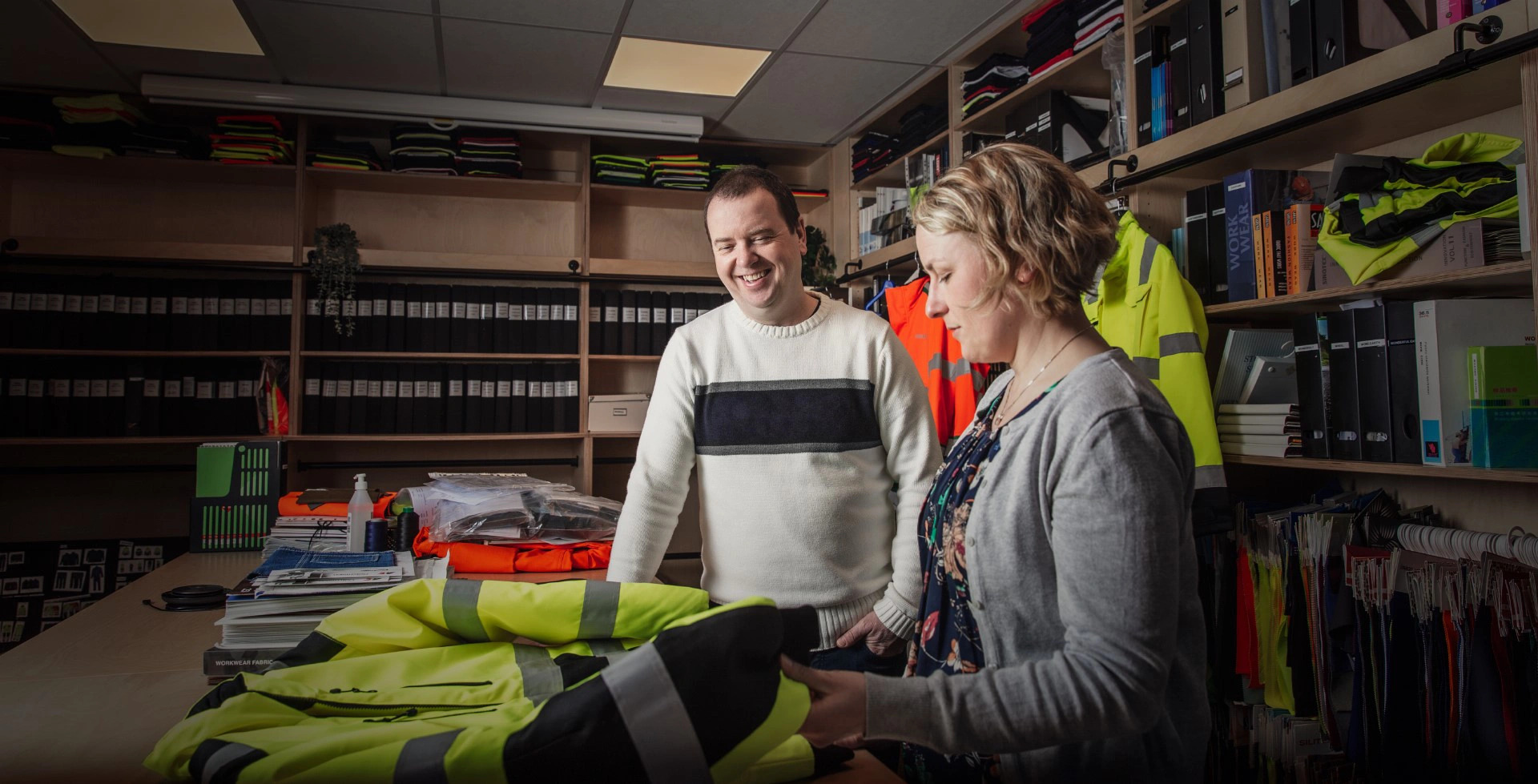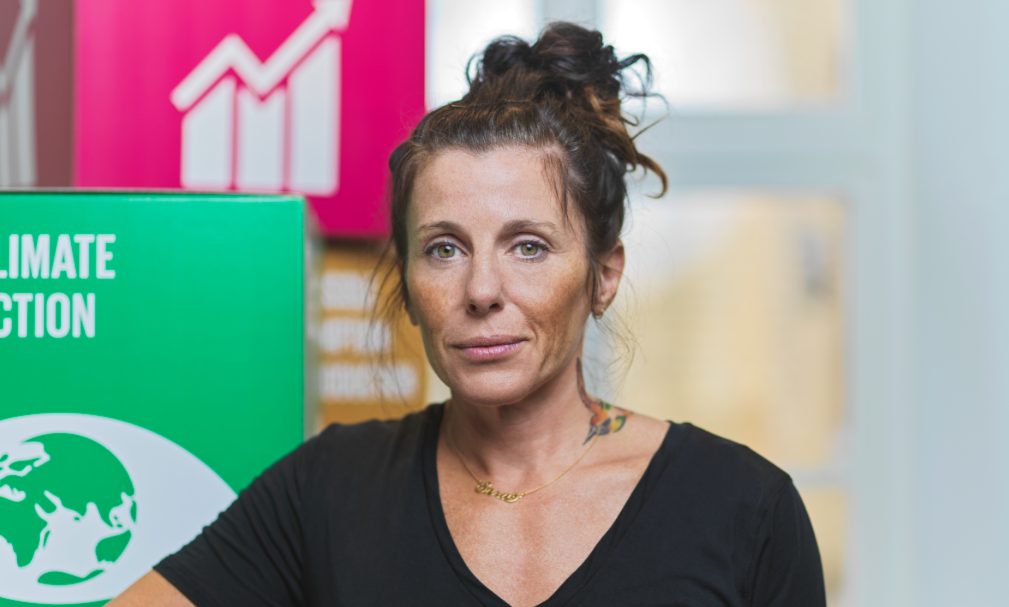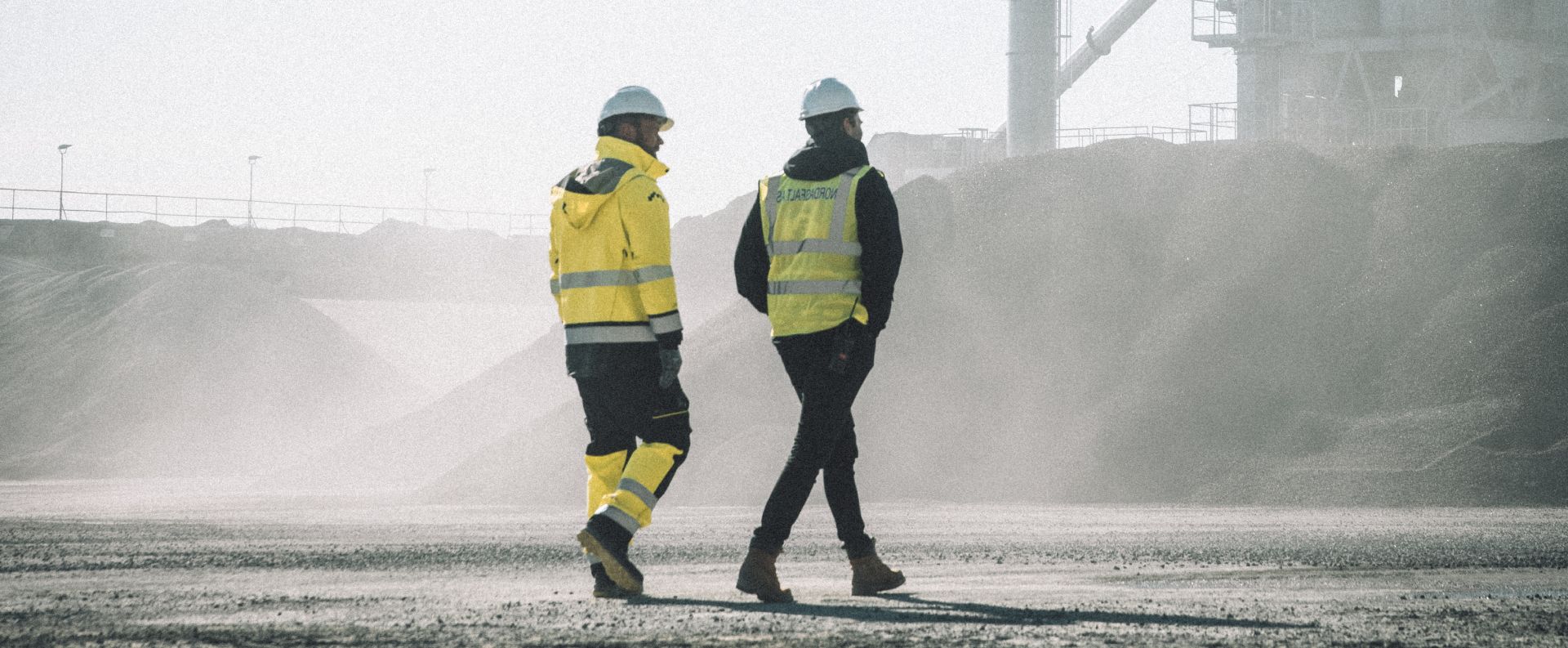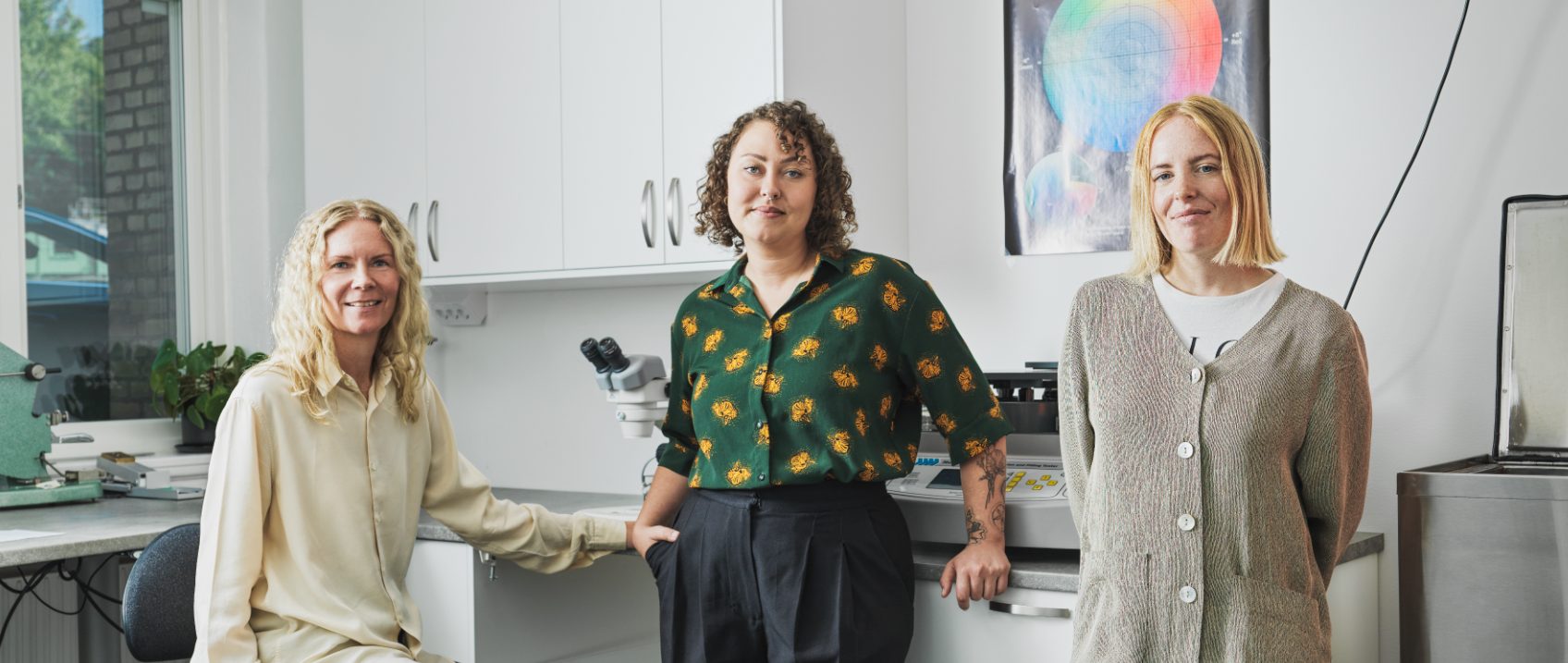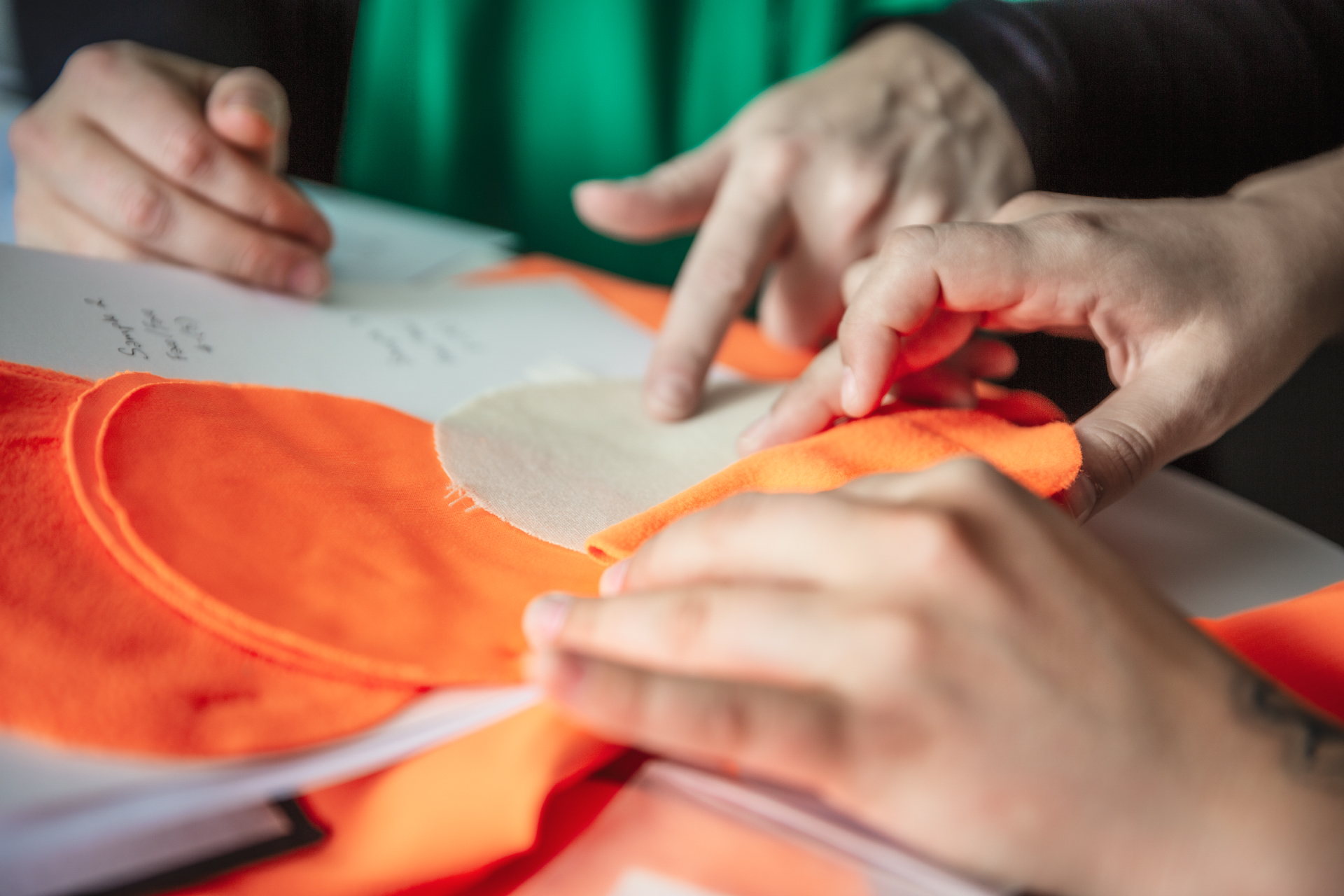Journey towards the perfect product
Sara Nygren Jönsson lives in the midst of the green transition, an adjustment that is constantly changing. “A lot will happen now.”
Imagine that your company manufactures or sells a single type of product. You can focus entirely on making it as green as possible. You can communicate this clearly and effectively. Everyone is happy.
Now, instead imagine that you have around 300,000 products. Tricky, right?
Yes, but at the same time, it is an opportunity.
Sara Nygren Jönsson, Product Development Manager at Alligo says:
– We focus on areas where we can make the biggest improvements possible, such as actions that can affect an entire product group. If we can change a product where we produce several thousand units, we can make a big difference. For example, switching to a recycled material for the lining on an entire product group, or switching to sustainably produced cotton in all our basic t-shirts. At the same time, we are also reducing our range so that we can put even more focus on developing sustainable solutions for our existing products.”
Regarding climate change, Bill Gates once said: “if you want to make a dent in this, you better think in wholesale magnitude.” In other words, think big. One such example is the water-intensive and chemical-heavy wet processes in textile production.
– We want to be innovative,” says Sara Nygren Jönsson, Product Development Manager at Alligo.
– Cotton production requires enormous amounts of water and pesticides. For example, approximately 2,700 liters of water are used to produce a shirt. If we can contribute to reducing water consumption, it affects all cotton products and we make a big difference,” says Sara Nygren Jönsson.
Alligo is therefore working to review how textile factories manage their water treatment.
– We work with factories that have the right water purification systems, which are properly certified. If we can influence that, then we influence all the textiles they manufacture. Other possibilities are through innovations such as dope dyeing, a technique that requires very little water in comparison to conventional dyeing.
EXPECTATIONS FOR MORE SUSTAINABLE PRODUCTS largely come from end consumers and investors. Deloitte’s Global State of the Consumer Tracker shows that 55 percent of consumers have purchased a more sustainable product or service in the past four weeks. Of these, 32 percent paid significantly more for the product than what a corresponding, less sustainable product would have cost.
– Increased focus on sustainability is based on demand. We want to be innovative and include more sustainability aspects in product development than what the requirements say. As a company we want to buy from other companies that have clean operations.”
However, the list of requirements for a completely sustainable product is long and complicated. The journey has only just begun.
– If it is a piece of clothing, for example, it should preferably be made of monomaterial*. It must have a circular design and construction, as well as a function and fit that the customer wants.
– Furthermore, it must be made of recycled material that can be recycled again, is biodegradable and fossil fuel-free. The garment must be reusable even if it gets dirt, oil and chemicals on it – or has logos. It must have certifications that can withstand any number of washes, be PFAS-free* but retain the same properties and not contain any dangerous chemical substances. The production process must be completely water-free. It must be produced without spillage, where the threads are intact and clean and energy is obtained from wind power.”
THERE ARE MANY difference threads if you want to improve your sustainability impact. So where do you start? Among other things, Alligo has chosen to examine one of its best-selling products – as a way of gaining insights into its supply chain and how it might look. This is being done in collaboration with Science Park Borås and an analysis tool that they have developed.
It starts with the material: Its origin, how it is processed and using which energy sources. It then continues with chemicals, transportation, recycling… well, the whole chain. It then gives it a value. For example, if the product is classified as red, it is associated with high sustainability risk.
– The analysis is incredibly time-consuming, but then we know. We can look at how we can make the product better. How we can make smarter choices,” says Nygren Jönsson.
BUT IT IS NOT ALWAYS ENOUGH to just be willing to improve. One challenge is conflicting laws and regulations, such as those around PFAS substances, where Alligo and the entire industry are working hard to take steps forward*.
– We have identified products that have PFAS substances in them, but where it is not needed, so we have started working on replacing them. At the same time, there are products and certifications where we need to have PFAS substances to achieve a higher level of protection and thus better safety. It’s a problem for everyone in the industry. We work closely together to find alternative solutions and collaborate to produce clauses that ensure that legislation does not clash.
– Basically, it’s about transparency, cooperation and analyses. A lot will happen now.”
